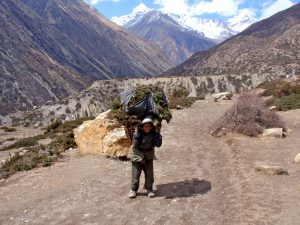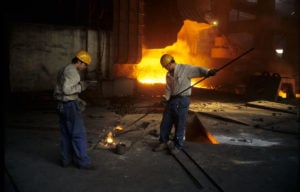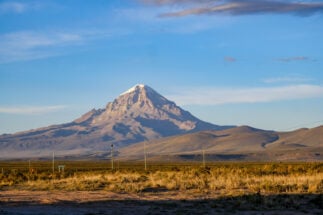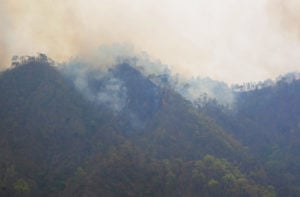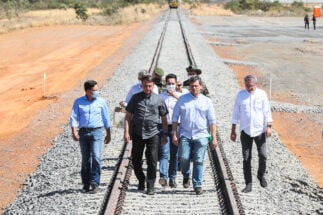Khusi Bishwokarma caresses her three-year-old daughter. The child is pale and underweight. She cannot speak clearly or engage in physical activity like other children her age in Muktikot village, in Bajura district of western Nepal. Khusi, speaking with The Third Pole in March this year, says that her daughter is malnourished.
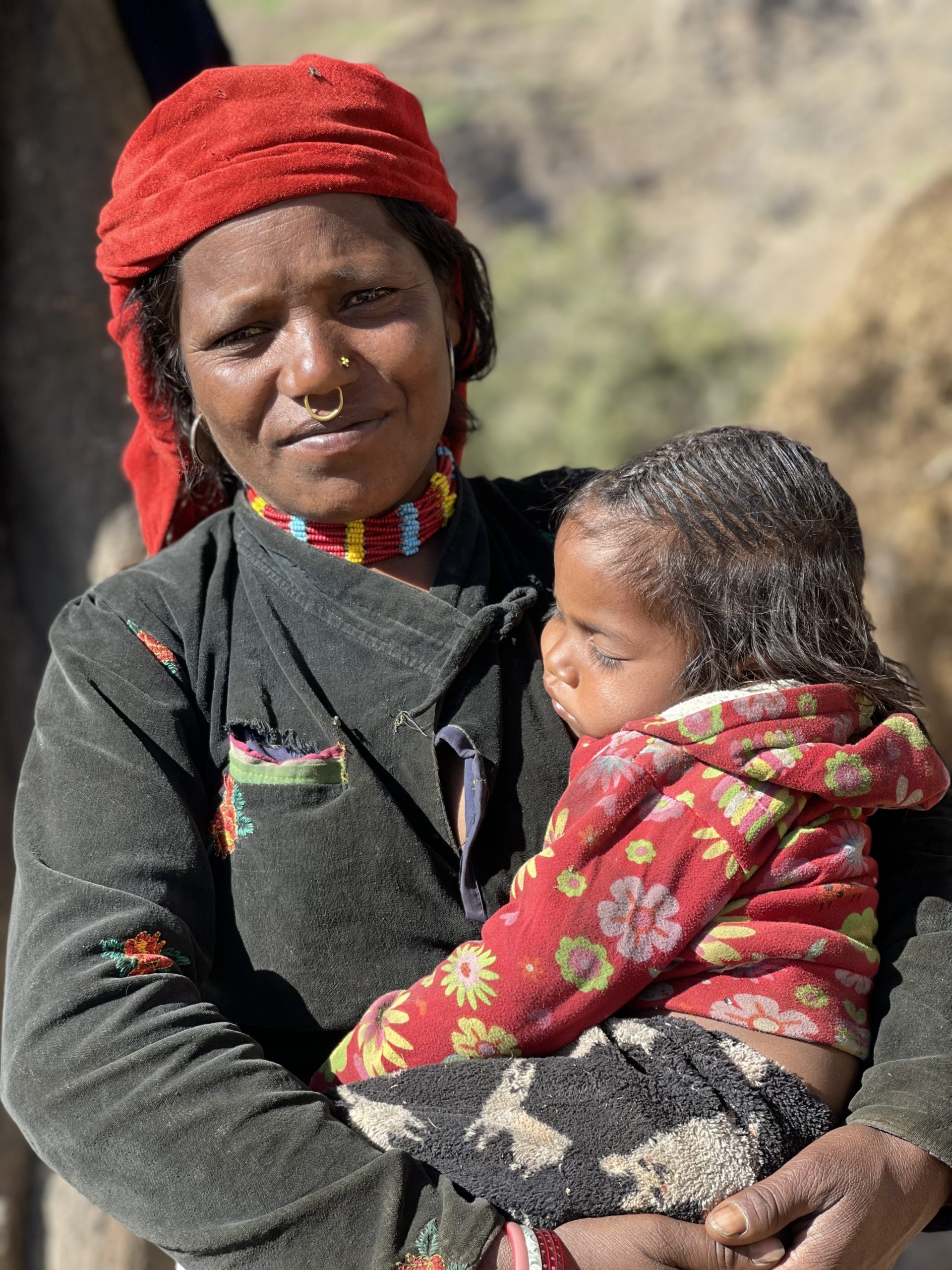
Khusi herself is pale. Just a few weeks ago her youngest child, a boy of eight months, died. “I couldn’t breastfeed my newborn properly as I myself didn’t have proper food to eat,” she says. “He was ill for a few days and just passed away. I have given birth to 13 children in total, only eight are alive today,” adds Khusi, who does not know her exact age but appears to be in her early 40s.
For seven to 12 months of the year, Khusi’s husband is away working as a labourer in neighbouring India. With two of her children already married, Khusi takes care of the remaining six. “My husband brings NPR 10,000-20,000 [USD 80-160] when he returns from India, which is used for food and clothing for the whole family for a year.”
This is a common story across Muktikot, a Dalit settlement of 400 households. When this correspondent for The Third Pole visits, the entire village seems to be populated by women and malnourished children, with the men away in India.
Referred to as “untouchables” before the term was abolished, the Dalit community are those allocated the most menial and degrading work within caste systems. Although such practices are no longer legal, the long-term impact of social exclusion remains. After visiting Nepal in November-December 2021, the United Nations’ special rapporteur on extreme poverty and human rights stated: “Discrimination is the single most important factor explaining why the Dalit are disproportionately affected by poverty: around 42% of Dalit live below the poverty line (43.6% of Hill Dalit and 38.2% of Terai Dalit), whereas the national poverty rate is 25.2%.”
New stresses on top of poverty and marginalisation
There is a lack of reliable, up-to-date data on malnutrition in Bajura district. But between December 2021 and early April this year, health workers diagnosed more than 800 children across Bajura as malnourished, with the district health office confirming that levels of malnutrition in the district are higher than the average across Nepal (the growth of 36% of children in Nepal is stunted). A survey by the district health office in 2019 found that Swami Kartik Khapar municipality, where Muktikot is located, had the highest number of malnourished children.
Western Nepal is beset by persistent poverty, low investment in infrastructure and higher incidence of caste-based discrimination. Climate change is exacerbating many of these problems, as drought, floods and drying springs impact subsistence agriculture.
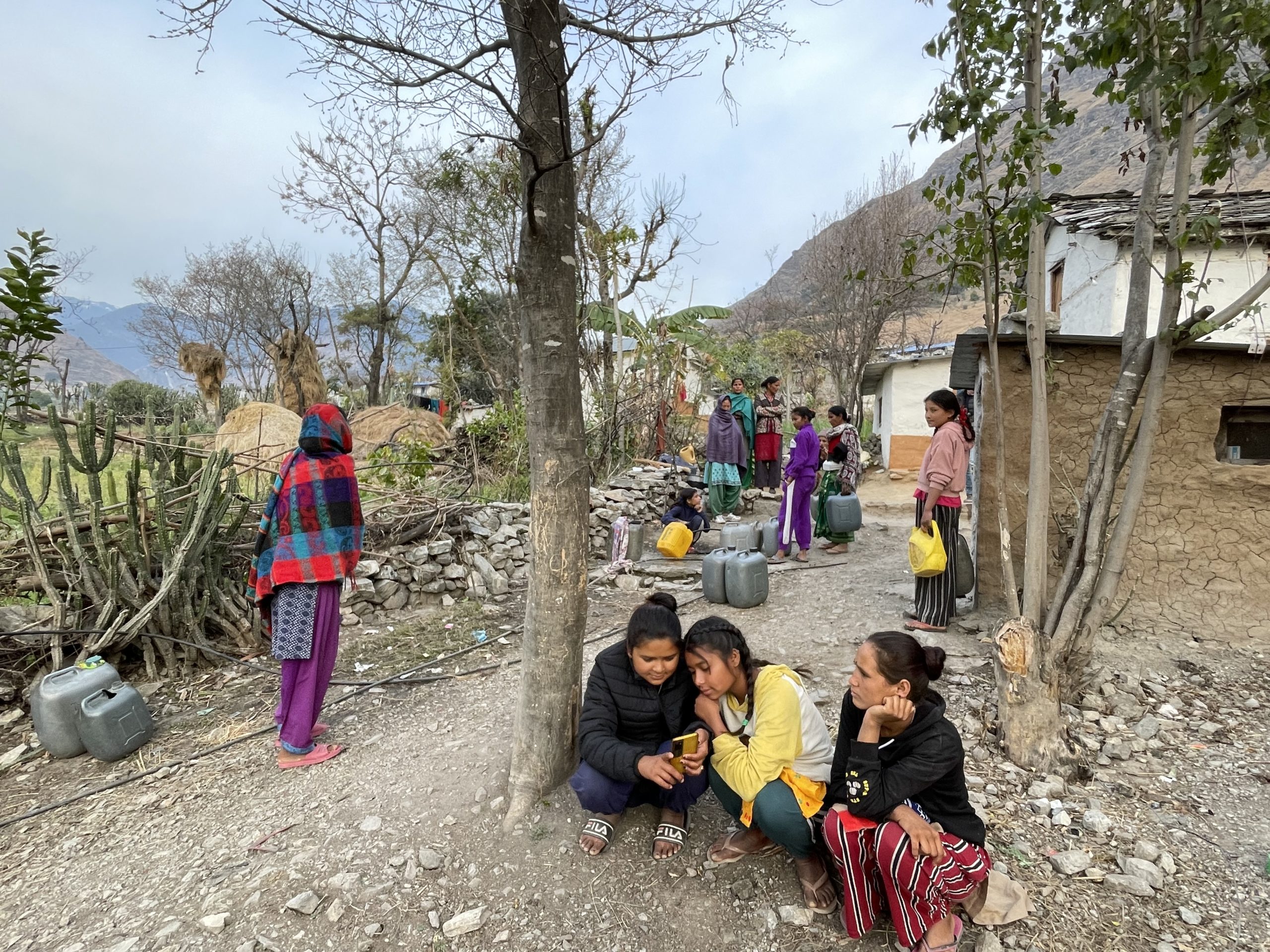
Women and children often experience the brunt of these problems. Chiranjeevi Shahi, president of Swami Kartik Khapar municipality, tells The Third Pole that the crisis is exacerbated by a high fertility rate, with women in Muktikot having up to 10 children, of which between two and three die as infants.
Nepal’s overall fertility rate has fallen from 3.955 in 2000 to 1.845 in 2020. Western Nepal has not experienced this change, or a lowering of the infant mortality rate (the number of deaths per 1,000 live births of children under one year old). Two infant deaths for every 10 births – the figure cited by Shahi – would mean an infant mortality rate of 200, eight times the national average of 25.
Climate change hits agriculture in western Nepal
Meghnath Dhimal, chief research officer at government institute the Nepal Health Research Council, says: “Malnutrition is more prevalent in far-western Nepal among the marginalised population due to climatic conditions. We are aware of the situation, but unfortunately we have not been able to undertake any research on the subject.”
Between 1975 and 2010, researchers say western Nepal warmed twice as much as the global average. Average precipitation in the Karnali river basin declined by nearly 5 millimetres a year between 1981 and 2012. These changes mean the region is particularly vulnerable to climate disasters, with an extreme drought in 2016.
The Nepal government’s 2021 assessment of risk and vulnerability ranked Bajura as the second most vulnerable district (Humla, in the northwest, was the most vulnerable). Vulnerability was defined as “sensitivity or susceptibility to harm, as well as a lack of capacity to cope and adapt. It is influenced by a variety of conditions varying in their sensitivity, such as demographic, socioeconomic, ecological, physical, and geological characteristics, as well as the status and condition of resources and infrastructures.” The 2021 District Disaster Preparedness and Response (DDPR) report states that Bajura experiences drought for eight months of the year, with unpredictable monsoon rainfall patterns.
Representative Concentration Pathway (RCP) refers to a particular climate scenario.
RCP 4.5 is a ‘likely’ scenario where global emissions of climate-warming gases start to decline around 2045, with a projected increase in temperature of 2 degrees Celsius by 2100
RCP 8.5 is a worst-case scenario where global emissions continue throughout the 21st century, with a projected increase in temperature of over 3C by 2100
“We have a complex geography, and lack of fertile land. In addition, there has been drought for the past seven to eight years, the rainfall is irregular, and arrangement of irrigation facilities is difficult due to the landscape. The food crisis is severe,” says Shahi, the president of Swami Kartik Khapar municipality.
In the past five years, 200 hectares of cultivable land in Bajura district have been swept away by flooding of the Budiganga, Wauli, Malagad and Dansangu rivers, officials at the Agriculture Knowledge Centre at Bajura (part of the Ministry of Agriculture and Livestock Development) tell The Third Pole. Min Prasad Jaisi, an officer at the Agriculture Knowledge Centre, says that the centre’s calculations show crop production (which mostly includes mustard, soybean, rice and lentils) has fallen by 15-20% in the past 10 years.
“Only 12.23% of the land is cultivable [in Bajura],” he adds.
The DDPR report states that only 4% of households in Bajura produce enough food to feed themselves. Nearly 40% of people only grow enough to sustain themselves for three months.
Shahi says: “We have been trying to manage from the local resources and budget, but it is not enough. So far, we have organised only one training programme focused on climate change.”
Scientists project that temperatures in western Nepal will continue to increase, as well as extremes of precipitation, due to climate change. More frequent and intense droughts and floods will challenge existing rain-fed agriculture practices further.
Villages’ water sources dry up
In Rudhi village, near Muktikot, people tell The Third Pole they are still struggling in the aftermath of a landslide two years ago. The disaster obstructed a spring – the sole water source relied on by about 160 households.
“For drinking water, we are forced to depend upon the Chinde River, which is an hour away,” says Ratna Dhami, a resident of Rudhi.
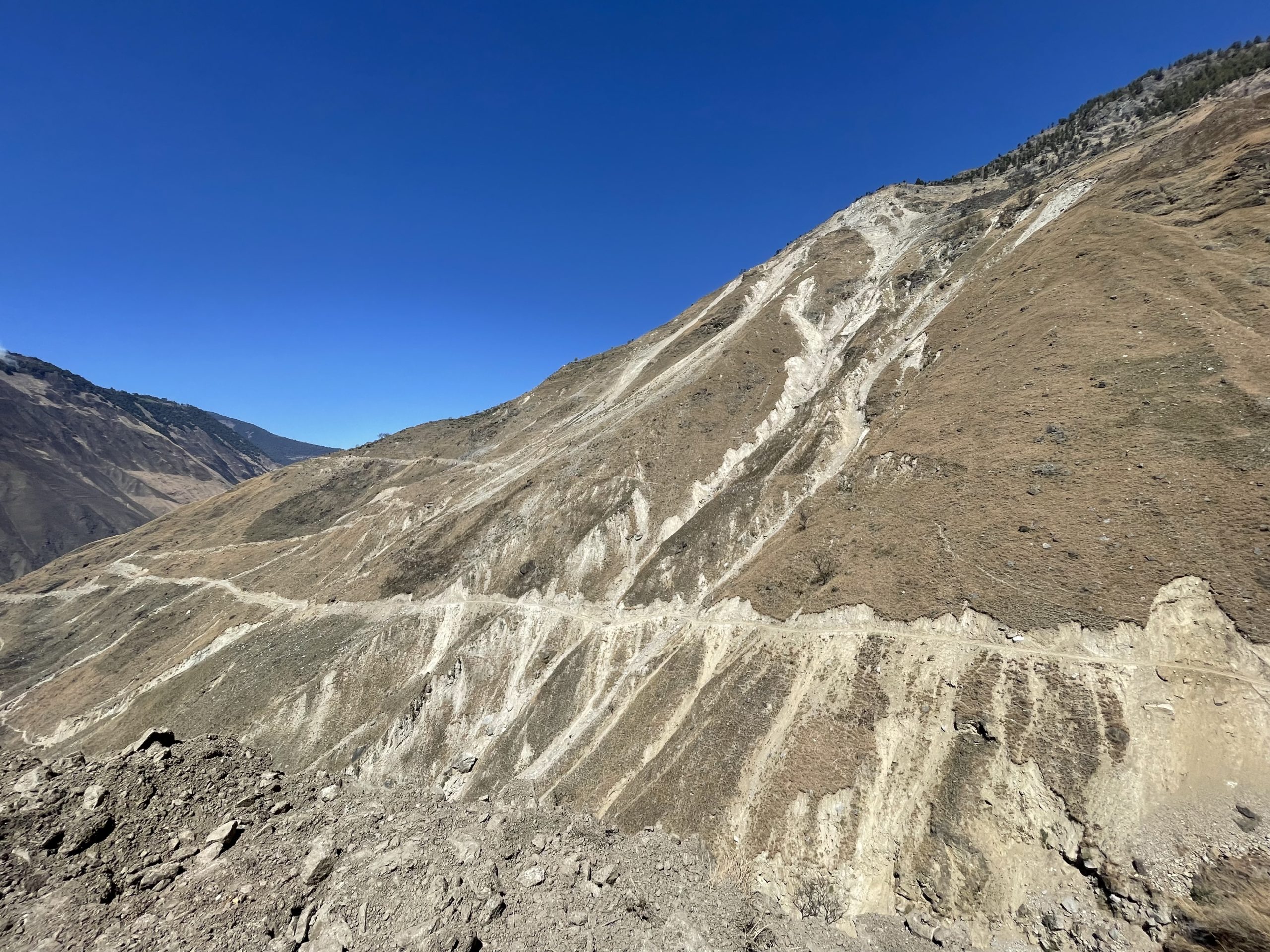
The villagers say they have stopped raising cattle because of the water scarcity. “We mostly plant wheat, barley and cereal, but irrigation has been disrupted. We have to depend upon the monsoon rains, which are not regular since the last few years. We have already stopped planting rice saplings,” Dhami says.
“We will not be able to survive in the current circumstances for a long time. We don’t have any savings to migrate. The only option is either the government arranges water facilities, or relocates the whole settlement to another place,” Dhami said, frustratedly, while her neighbours agreed. Many villages in the district have a similar story.
In 2018-19, the Swami Kartik Khapar municipality constructed irrigation canals in the lower areas, but this has not helped settlements like Rudhi that are hundreds of metres above the Karnali River. “There is a possibility of lift irrigation system, but it’s beyond our capacity. There is a need of support from the provincial and federal government,” Shahi from the municipality says. He has submitted a proposal to resettle the households, but has not received a response yet.
Aid, adaptation and advocacy
In some places like Kolti village, there is advice and support for pregnant women and young mothers. The Third Pole speaks with 30-year-old Sobha Rokaya as she waits her turn at Kolti Primary Health Centre. Rokaya was married at the age of 15, and gave birth to seven children in 10 years, two of whom died before reaching their first year. She comes to the Kolti Primary Health Centre for ready-to-use fortified flour.
“I walked for three hours this morning to receive the free nutritious flour for my eight-month-old daughter. She is malnourished and weighs only 5 kilograms,” Rokaya says.
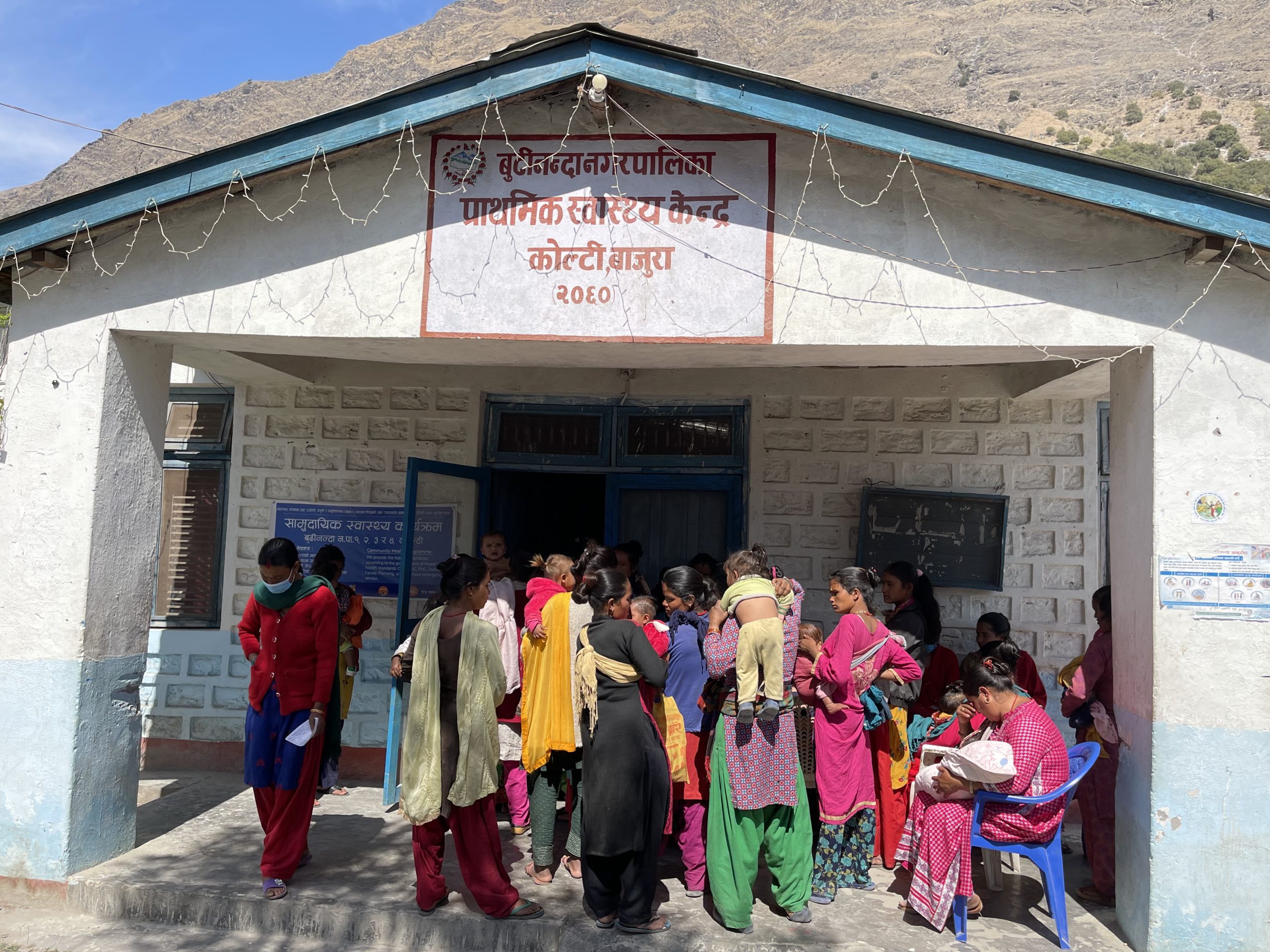
In other areas, villagers are growing crops more suited to the changing climate. In the dry higher reaches of Budhinanda municipality in Bajura, farmers have started to grow soybean, pulses and olive trees instead of rice, mayor Padam Kumar Giri tells The Third Pole.
Min Prasad Jaisi, the officer at the Agriculture Knowledge Centre, says the centre has set up artificial ponds and distributed seeds to villagers across the district. “Apple trees in the hilly belt are being replaced by banana and lemon trees,” Jaisi adds.
Development charities and human rights organisations are also working to make the right to food a reality in Nepal. Voluntary Service Overseas tells The Third Pole that in four provinces its volunteers helped draft local versions of the Right to Food and Food Sovereignty Act 2018 through workshops and policy dialogues.
Food-first Information and Action Network (FIAN) Nepal has been doing advocacy and legal analysis of the food crisis and malnutrition in the far-west and Karnali region.
“Food is a fundamental human right, thus the state should protect, respect and fulfil this right. We are working in coordination with local, provincial and federal government to ensure food rights to people,” says Binod Prasad Pandey from FIAN Nepal.
With additional inputs by Omair Ahmad and Natalie Taylor
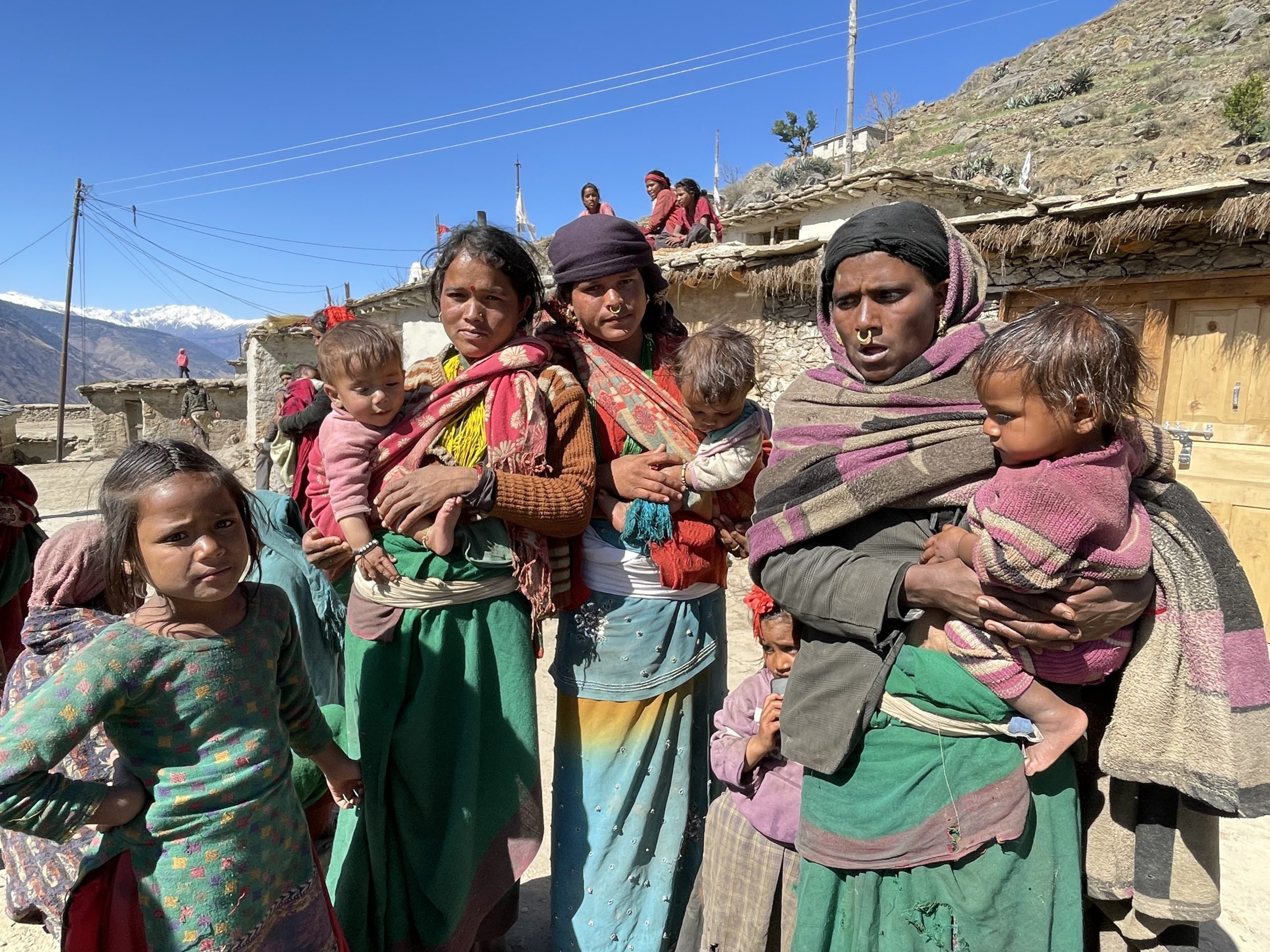

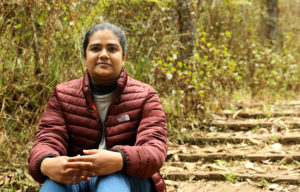
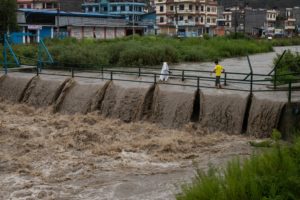
![A Nepali farmer holds locally grown coffee beans in his hands [image by: Abhaya Raj Joshi]](https://dialogue.earth/content/uploads/2018/01/himalayan-arabica-300x128.jpg)
